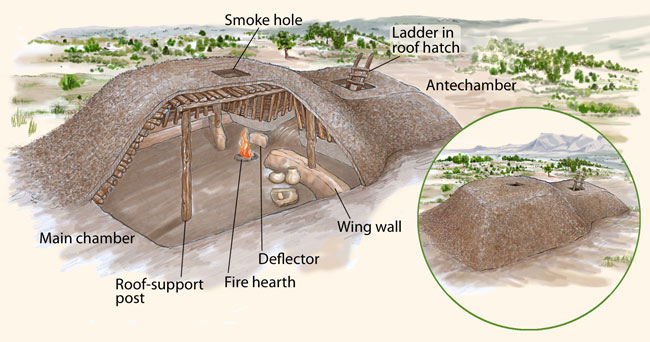Basketmaker Houses
When people became farmers, they began building houses that were more permanent than houses built during earlier time periods.

A Basketmaker pithouse.
Basketmaker houses are called pithouses because they were dug partly belowground. Pithouses during this time were usually about 3 feet (1 meter) deep. Because they were partly belowground, they stayed cooler in the summer and warmer in the winter. Where did Pueblo people throw their garbage in ancient times? The small drawing in the circle (see above) shows what a Basketmaker pithouse looked like from the outside. The large drawing, with part of the roof and wall removed, shows the inside of the house. The different parts of the house are labeled, including the main chamber, antechamber, roof-support posts, wing wall, deflector, fire hearth, smoke hole, and roof hatch. The main chamber was where the family lived. The antechamber was used for storing tools, containers, and food. People got in and out of their houses by climbing ladders that leaned against the smoke holes or roof hatches. During the Basketmaker period, Pueblo people also built another kind of structure, which archaeologists call a "great kiva" (pronounced KEE-vuh). Like pithouses, great kivas during this time were built partly belowground. But, unlike pithouses, great kivas were round and had just one chamber. They were also very large. People didn't live in great kivas. Instead, archaeologists think great kivas were places where many people gathered to socialize, perform ceremonies, or discuss issues important to the whole community. |
 DONATE TODAY
DONATE TODAY
